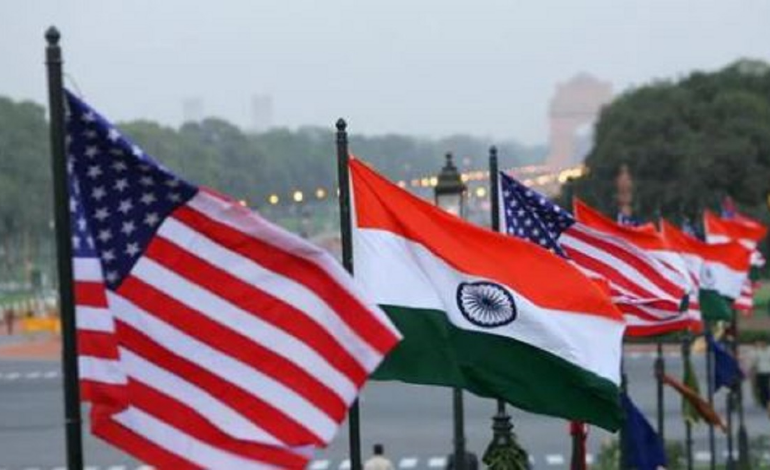
Washington The US national defence strategy (NDS) has committed to strengthening America's major defence partnership with India to improve its ability to deter China both on land and at sea. China is viewed as the US's most significant strategic rival for the ensuing decades. Additionally, it has been stated that the US will support its allies and partners in the acute cases of "grey zone coercion" by China, including along the disputed border with India.
The National Defense Strategy (NDS) was unveiled by Secretary of Defense Lloyd J. Austin on Thursday, days after the Joe Biden administration's national security strategy, which said that Russia and China were the administration's primary priorities.
Austin noted in his introduction to the strategy that China would continue to be the US's "most consequential strategic competitor" for the following decades. “I have reached this conclusion based on the PRC’s increasingly coercive actions to reshape the Indo-Pacific region and the international system to fit its authoritarian preferences, alongside a keen awareness of the PRC’s clearly stated intentions and the rapid modernization and expansion of its military.”
According to Austin, the Department of Defense was instructed by the NDS to "act urgently" in order to "sustain and strengthen" American deterrence against China, which has been recognized as the department's main problem. Along with strengthening "robust deterrence" against Russia, the policy calls for "mitigating and protecting against threats from North Korea, Iran, violent extremist organisations, and trans-boundary concerns like climate change".
The strategy claims that China is attempting to undermine US partnerships and alliances in the area and use its expanding capabilities to "coerce neighbours and threaten their interests" in a section on the security environment. China's "increasingly provocative rhetoric and coercive activity" toward Taiwan, according to the report, is destabilising and increases the likelihood of a miscalculation. “This is a part of a broader pattern of destabilizing and coercive PRC behaviour that stretches across the East China Sea, South China Sea and the Line of Actual Control”, the last being a nod to China’s aggression at the border with India.
The NDS also outlines China's expanding military capabilities, noting that Beijing has modernized and expanded "nearly every aspect" of the People's Liberation Army in an effort to offset American military advantages. The "space, counterspace, cyber, electronic, and informational warfare capabilities" of the PLA are also developing and integrating very quickly. According to the US plan, the PLA is enlarging its global reach, building a "more robust overseas and basing infrastructure," and growing and modernising its nuclear capabilities at a faster rate.
According to NDS, the US will have to deal with "deterring two major powers with modern and diverse nuclear capabilities," namely China and Russia, which will put "new stresses on strategic stability."
In order to maintain a "free and open regional order and deter attempts to resolve disputes by force," the NDS states that the Pentagon would "reinforce and build out a resilient security architecture" in the Indo-Pacific. According to the strategy, Washington will modernise its alliance with Japan and strengthen "combined capabilities by aligning strategic planning and priorities in a more integrated manner"; it will also deepen its alliance with Australia through "investments in posture, interoperability and expansion of multilateral cooperation" and promote advanced technology cooperation through AUKUS and Quad.
India is included in this section of the strategy. In order to strengthen India's capacity to prevent PRC aggression and provide free and open access to the Indian Ocean region, the Department will advance its Major Defense Partnership with India. The strategy continues by committing support for Taiwan's "asymmetric self-defense," working with South Korea to improve that country's defence capabilities, promoting the role of ASEAN in resolving regional security issues, and promising to "ensure power projection in a contested environment."
The US will cooperate with allies and partners to counter "acute forms of gray zone coercion" brought on by China's campaigns to take control of the "East China Sea, Taiwan Strait, South China Sea, and disputed land borders such as with India," according to the policy.
Defense of the homeland, deterring strategic attacks on the US, its allies, and partners, deterring aggression and ensuring the US's military advantage by building a resilient joint force and defence ecosystem are the top four goals outlined by NDS for the Pentagon. With integrated deterrence, which entails coordinating efforts across "warfighting domains, theatres, spectrum of conflict, all instruments of US national power, and our networks of Allies and partnerships," the strategy intends to achieve these aims.